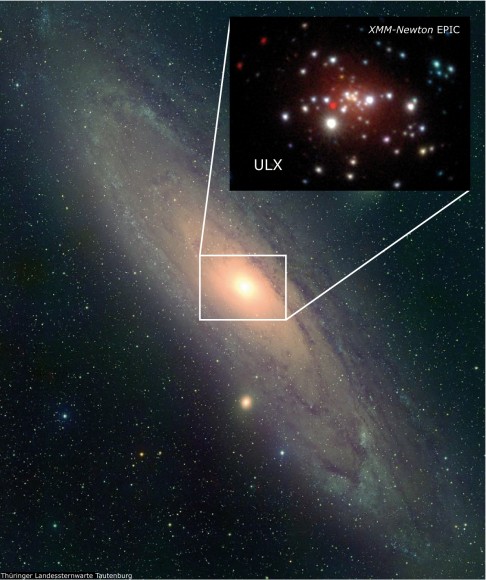Daily Image
11-10-2012Todays Colloquium: Scaling the heights of accretion with ultra-luminous X-ray sources
| Submitter: | Matt Middleton |
| Description: | High quality X-ray observations spanning almost two decades have provided the X-ray astronomy community with an unparalleled view of accretion onto black holes. Whilst the majority of Galactic sources are seen to accrete matter at low rates, there are others which appear to approach and even exceed the classical Eddington limit implied by their mass. Such extreme modes of accretion are intangibly linked with the most energetic phenomena in the Universe including high bulk Lorentz factor, collimated outflows and powerful uncollimated winds. Searching for definitive answers in those few sources in our own Galaxy is complicated by large columns of obscuring material in the line-of-sight, whilst studying the much more massive AGN provides only a 'snapshot' of the accretion process, probing timescales that are irresolvable in X-ray binaries. Ultra-luminous X-ray sources (ULXs) may provide a ready solution as they are most likely associated with Eddington rate accretion in extragalactic stellar mass black hole binaries. As there are many more of these sources in the local Universe and their emission is both bright and relatively unobscured, studying their properties should provide valuable insights into the process of extreme accretion. This relies on demonstrating that the compact object powering the emission is of order stellar mass yet this has proven to be extremely elusive and contentious. In this colloquium I will discuss the progress made in understanding the emission processes of these sources and will present the most unambiguous evidence to date that a nearby ULX in M31 harbours a stellar mass black hole made possible by the first detected compact radio source associated with a ULX. |
| Copyright: | Matt Middleton |
| Tweet |  |
